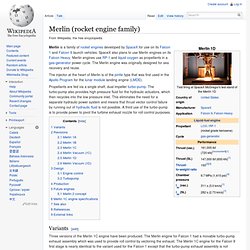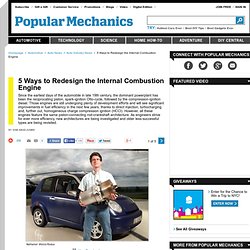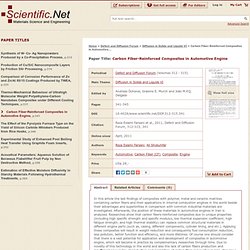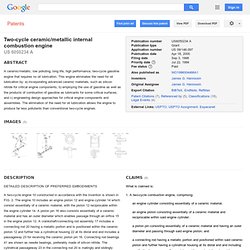

Executor (rocket engine) The injector of Executor is of the pintle type that was first used in the Apollo Program for the lunar module landing engine.

Propellants are fed via a single shaft, dual inducer-impeller turbo-pump. The turbine exhaust gases are used for attitude control of the Haas 2 rocket. Two versions of the Executor are in development. The Executor engine for the first stage of the Haas 2B and Super Haas launchers and for the IAR-111 Excelsior airplane. The second variant is the Executor Plus engine that it uses a larger exhaust nozzle optimized for vacuum operation. Executor, uses an inexpensive, expendable, ablatively cooled silica-phenolic and carbon fiber composite nozzle, and produce 260 kN of thrust. Merlin (rocket engine) The injector at the heart of Merlin is of the pintle type that was first used in the Apollo Program for the lunar module landing engine (LMDE).

Propellants are fed via a single shaft, dual impeller turbo-pump. The turbo-pump also provides high pressure fluid for the hydraulic actuators, which then recycles into the low pressure inlet. This eliminates the need for a separate hydraulic power system and means that thrust vector control failure by running out of hydraulic fluid is not possible. A third use of the turbo-pump is to provide power to pivot the turbine exhaust nozzle for roll control purposes. 5 Alternative Engine Architectures - How to Replace the Internal Combustion Engine. Each of the alternative engine architectures discussed here have one major feature in common with the standard piston engines that have dominated the automobile for more than a century: Fuel is burned inside a chamber to convert chemical energy into mechanical energy for propulsion.

However, that requires moving air and fuel in and exhaust gases out of the combustion chamber, all of which adds complexity and reduces efficiency. In 1816, Scottish inventor Robert Stirling conceived of the closed-cycle engine with the working fluid (in this case, air) remaining contained within the device. The heat source—which could be almost anything, including combustion—is external to the engine. Technology - Plastic Engines Could Help Cars Lighten Up. Carbon Fiber-Reinforced Composites in Automotive Engine. In this article the last findings of composites with polymer, metal and ceramic matrices containing carbon fibers and their applications in internal combustion engines in the world beside their advantages and superiorities in comparison with common industrial materials are investigated.

Afterwards, the position of these materials in automotive engines in Iran is analyzed. Researches show that carbon fibers-reinforced composites due to unique properties (including high specific strength and specific modulus, low thermal expansion coefficient, high fatigue strength, and high thermal stability) can replace common structural materials in different engine parts (such as, casing, different components, cylinder lining, and etc.).
Applying these composites will result in weight reduction and consequently fuel consumption reduction, less pollution, better function and efficiency, and more lifetimes. Ceramic Rotary Engines, Inc ‡ Patent US6134881 - Fiber reinforced ceramic matrix composite internal combustion engine intake ... - Google Patents. This Appln is a Div of Ser.

No. 08/803,961 Feb. 21, 1997 U.S. Pat. No. 5,842,342. 1. Technical Field This invention relates to intake and exhaust port liners for the head of an internal combustion (IC) engine, and more particularly, to such port liners formed of a fiber reinforced ceramic matrix composite (FRCMC) material and methods for making them. Patent US6050234 - Two-cycle ceramic/metallic internal combustion engine - Google Patents. A two-cycle engine 10 constructed in accordance with the invention is shown in FIG. 2.

The engine 10 includes an engine piston 12 and engine cylinder 14 which consist essentially of a ceramic material, with the piston 12 reciprocable within the engine cylinder 14. A piston pin 16 also consists essentially of a ceramic material and has an outer diameter which enables passage through an orifice 15 in the engine piston 12. A crankshaft/connecting rod assembly 17 includes a connecting rod 20 having a metallic portion and is positioned within the ceramic piston 12 and further has a cylindrical housing 22 at its distal end and includes a passageway 23 for receiving the ceramic piston pin 16.
Connecting rod bearings 41 are shown as needle bearings, preferably made of silicon nitride.